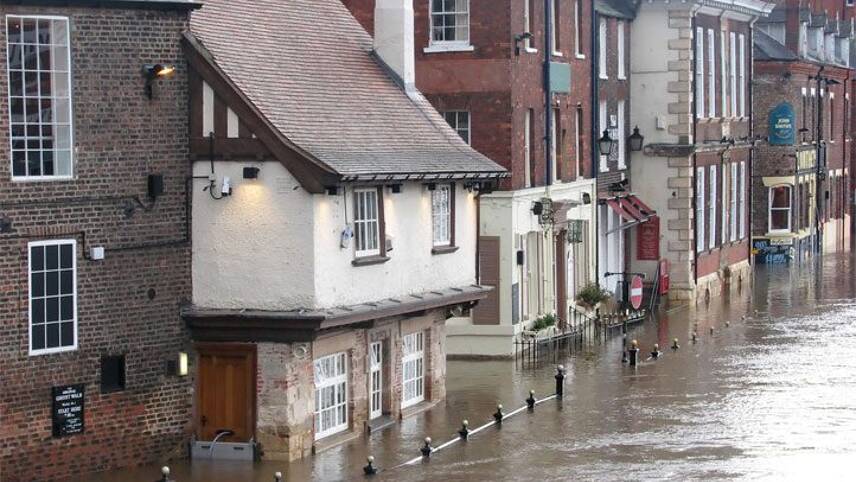Register for free and continue reading
Join our growing army of changemakers and get unlimited access to our premium content

Pictured: Flooding in York
A new report from Oxford University’s Environmental Change Institute, Smith School of Enterprise and the Environment and the Green Finance Institute (GFI) has warned that current investments into green projects are failing to account for the need for climate resiliency.
The report warns that “significant gaps” have emerged in UK policy that is slowing the flow of finance into projects that can mitigate against climate impacts like heatwaves, drought, storms and flooding.
With the Infrastructure and Projects Authority estimating that investment into UK infrastructure over the next decade will reach £650bn, the new report claims that policies are needed to ensure climate resiliency is baked into spending plans.
Current investment flows into buildings and infrastructure and agricultural practices, for example, could actually be making the UK more vulnerable to climate impacts because adaptation and resiliency are being ignored.
The report also cites that only 20% of asset managers and 35% of asset owners are reporting on their physical climate risks in line with the Task Force on Climate-Related Financial Disclosures (TCFD).
Oxford University’s Resilience and International Development Programme lead Dr Nicola Ranger said: “The UK is underprepared for climate change, putting lives, livelihoods, assets and well-being at increasing risk. Physical climate risks are not fully accounted for in financial decision making which means investment flows into critical sectors like infrastructure, buildings and agriculture may be unknowingly pushing the UK in the wrong direction, as well as leaving the UK financial sector itself exposed to systemic financial risks.
“These gaps require action by financial institutions but also regulators and government. Government action is not matching the urgency and risk.”
Government inaction
The Government is due to publish a new five-year plan for climate mitigation this summer. The report notes that an excess of 3,000 deaths were recorded in the UK during heatwaves and this figure may rise to 7,000 by 2050.
The Government’s own Climate Change Risk Assessment (CCRA3), published last year, outlined more than 60 risks and opportunities facing the UK through the lens of the climate crisis. Risks and opportunities cover nature, infrastructure, economy and society.
The UK’s climate watchdog, the Climate Change Committee (CCC), warned in March that there is a “striking lack of climate preparation” from current green policies and that the current National Adaptation Programme introduced by the Government is failing to match the scale of the challenge of the climate crisis.
Reports suggest that at least half a billion pounds, and up to £1bn, will need to be funnelled into adaptation in the UK each year during the coming ten years. A far higher figure of £10bn is floated by the CCC itself.
In late 2022, the Joint Committee on the National Security Strategy accused the UK Government of a “severe dereliction of duty” due to a lack of responsibility for improving the climate resilience of critical infrastructure like power distribution networks, transport networks and communications infrastructure.
Even the public believes that ministers are failing in this area. Only 4% of UK adults think that the UK Government has a good climate adaptation plan, and almost half think the nation is completely unprepared for more frequent and intense heatwaves.
The new report does offer a list of recommendations, pulled together from adaptation experts, that could help the Government address ongoing vulnerabilities while boosting climate resiliency.
Measures include: issuing the first dedicated “adaptation bond” to support local, municipal and national adaptation projects; establishing a National Office for Climate Readiness and a private-body task force by the end of the year; introduce sectoral adaptation roadmaps and Government-set targets for climate adaptation finance by 2025.


Please login or Register to leave a comment.